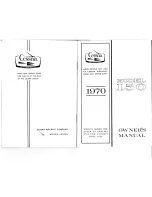Summary of Contents for Piper Archer
Page 1: ...Piper Archer Training Supplement ATPFlightSchool com Revised 2019 08 08 ...
Page 4: ......
Page 58: ......
Page 59: ......
Page 1: ...Piper Archer Training Supplement ATPFlightSchool com Revised 2019 08 08 ...
Page 4: ......
Page 58: ......
Page 59: ......

















